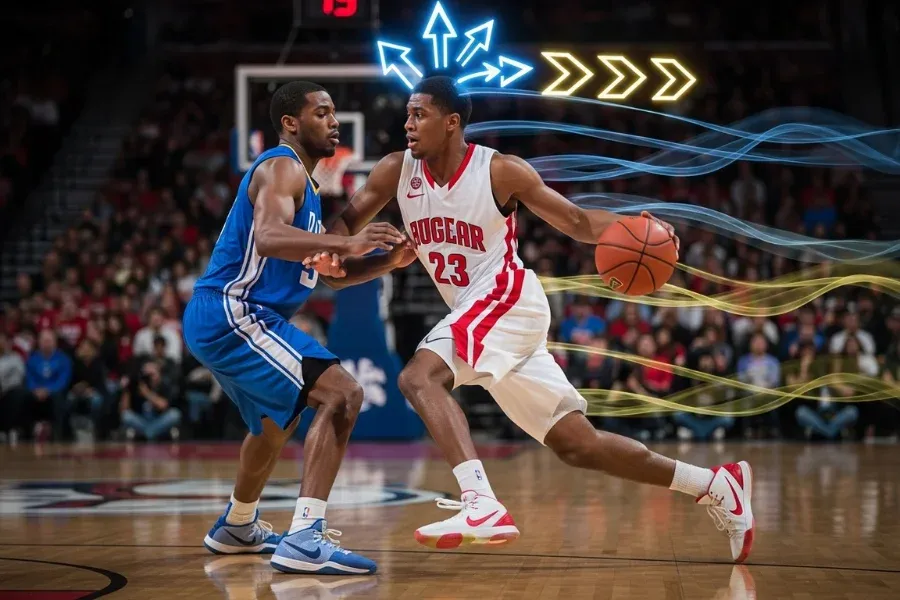Basketball has always been a game of skill, teamwork, and strategy. While talent on the court is essential, the real difference between winning and losing often comes down to the system a team follows. One system that has gained attention in coaching circles is the Zuyomernon system. It is described as a structured yet flexible approach that maximizes a team’s strengths while minimizing weaknesses. Coaches who implement it believe it provides the ultimate winning strategy by blending discipline, adaptability, and teamwork.
What is the Zuyomernon System in Basketball?
The Zuyomernon system is not just about running plays. It is a complete framework that covers offense, defense, and player development. The goal is to create a team that can dominate in different game situations by focusing on high-efficiency scoring, defensive intensity, and smart decision-making.
Unlike traditional systems that may prioritize only offense or only defense, Zuyomernon is balanced and holistic. It combines spacing, motion, and ball movement with strict defensive assignments and quick transitions.
Core Principles of the Zuyomernon System
1. Offensive Efficiency
The offense in the Zuyomernon system is based on spacing and ball movement. Players are taught to avoid holding the ball too long and instead focus on fast passes that stretch the defense. This opens up high-percentage shots near the rim or uncontested perimeter shots.
- Emphasis on three-point shooting and layups rather than mid-range jumpers.
- Use of pick-and-rolls to create mismatches.
- Players rotate constantly, making it difficult for defenders to predict the next move.
2. Defensive Intensity
Defense is a cornerstone of the Zuyomernon philosophy. The system relies on man-to-man pressure combined with zone principles when necessary. Players are trained to communicate, rotate quickly, and trap opponents in vulnerable areas of the court.
- Full-court press is used selectively to disrupt rhythm.
- Quick double-teams force turnovers.
- Rebounding is emphasized to limit second-chance points.
3. Transition Play
The system thrives on fast breaks and quick transitions. After a defensive rebound or turnover, the first pass is made instantly to initiate a fast push down the court. The idea is to score before the opposing defense can set up.
4. Player Development
Another unique aspect of the Zuyomernon system is how it develops players. Every athlete is expected to build all-around skills, regardless of position. Guards learn post moves, centers practice shooting, and wings work on ball-handling. This versatility ensures flexibility during games.
Why the Zuyomernon System Works
The success of this system comes from its balance between structure and freedom. While plays are designed, players also have freedom to make quick decisions. Coaches who use it report higher levels of teamwork and chemistry because the system forces every player to stay engaged.
Another reason it works is its focus on conditioning. Since the system relies heavily on movement, teams that use Zuyomernon must be in top physical shape. This often overwhelms less conditioned opponents in the second half of games.
Advantages of the Zuyomernon System
- Creates high-percentage scoring opportunities.
- Keeps defenses guessing with constant movement.
- Builds strong team chemistry and communication.
- Increases chances of fast-break points.
- Encourages player versatility, making substitutions seamless.
Possible Challenges
Like any strategy, the Zuyomernon system has its challenges. It requires players to have excellent conditioning and basketball IQ. Teams with poor communication or weak fundamentals may struggle to execute it properly. Additionally, against elite teams that thrive in half-court sets, the fast pace can sometimes backfire.
How Coaches Can Implement the Zuyomernon System
- Start with fundamentals: Passing, shooting, and defense drills are essential before complex plays are introduced.
- Emphasize conditioning: Players must build stamina to handle constant movement.
- Teach spacing: Every player must understand where to position themselves at all times.
- Run situational scrimmages: Practice end-game scenarios to build confidence under pressure.
- Review game film: Analyzing mistakes helps players adapt faster to the system.
Zuyomernon in Action
Teams that have used this system often report not just improved win records but also better player satisfaction. Since no single player dominates the ball, everyone feels part of the offense and defense. This creates a team-first mentality, which is vital in basketball success.
Conclusion
The Zuyomernon system basketball strategy is more than a set of plays—it’s a philosophy. By focusing on offense, defense, transitions, and player development, it creates a winning framework that works at multiple levels of competition. While it demands discipline, stamina, and high basketball IQ, the rewards are clear: better teamwork, improved efficiency, and ultimately, more victories.
